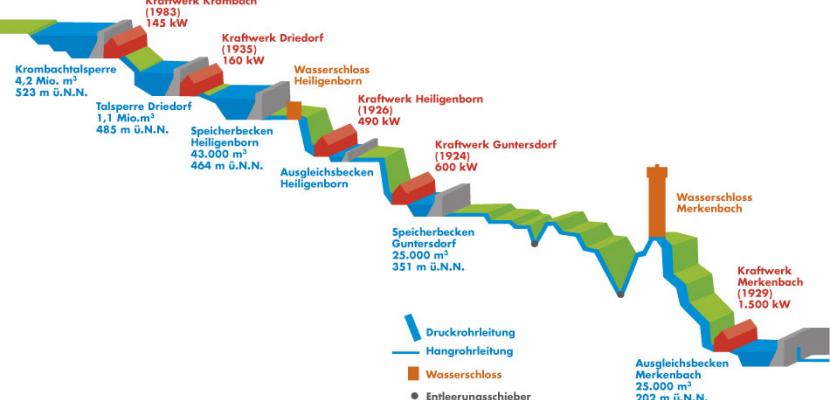Image

Power plant chain „Rehbachtal” + energy educational trail „Water, wind and sun”
Published on 05 February 2021

Germany
Gießen
This is the good practice's implementation level. It can be national, regional or local.
About this good practice
There was the fear of tearing down the power plants chain (valuable industrial heritage) and an idea of how to reuse this and preserve it needed to be born. The trail was designed in order to make an industrial heritage more visible and to provide information of "green" energy production along an interesting chain of five hydroelectric power stations. As early as the 1930s, the Rehbach was, in terms of length, gradient and quantity of water, one of the best-used stream systems in Germany for energy generation.
The trail has a length of approx. 20 km, with a walking time of approx. 4–5 hours. It has 3 main components of educational interest: energy won by water, wind and sun. On the numerous information boards, people will learn more about how energy is generated from natural resources. An information centre was set up at the Merkenbach hydroelectric power station in 1989 (currently closed). There is a bus connection from both sides back to the respective starting point.
The trail has a length of approx. 20 km, with a walking time of approx. 4–5 hours. It has 3 main components of educational interest: energy won by water, wind and sun. On the numerous information boards, people will learn more about how energy is generated from natural resources. An information centre was set up at the Merkenbach hydroelectric power station in 1989 (currently closed). There is a bus connection from both sides back to the respective starting point.
Expert opinion
The idea to use a former hydroelectric power plant and to connect it with a thematic trail to teach about the environmental, social and economic benefits of energy production from renewable sources is excellent and clearly aligned with the objectives of the European Climate Pact (https://ec.europa.eu/clima/policies/eu-climate-action/pact_en). The good practice also shows a very clever adaptive reuse solution for a water-linked industrial heritage site. Further insights for local and regional policymakers on how to valorise the water-linked heritage (including via thematic trails) as well as on the restoration of river ecosystem services can be found in the recordings of the Policy Learning Platform online thematic workshops on ‘Living rivers: a driver for sustainable regional development’ available on the Interreg Europe website.
Resources needed
The path was funded with 10,000 euros by LEADER (co-funding: Driedorf, Herborn, 70 % of the funding was provided). Benches along the trail were sponsored by companies and a local bank. A private person collected all the information, supported by the energy provider EAM.
Evidence of success
A good combination of historical/industrial sites of an active company with municipal interests of attracting tourists and is also promoted via the Geopark Westerwald-Lahn-Taunus. The decision by the politicians to implement the path was strengthened by the LEADER funding.
Potential for learning or transfer
The energy education trail is the first hiking trail that provides information about wind, water and sun at the same time. The idea of renewable energies and the excellent historical hydrogenetic power plant can be experienced very easily reading the information - it is well made up and easy to understand.
Further information
Website
Good practice owner
You can contact the good practice owner below for more detailed information.
Organisation
Driedorf (Community)

Germany
Gießen
Contact
Spokesperson / Project manager